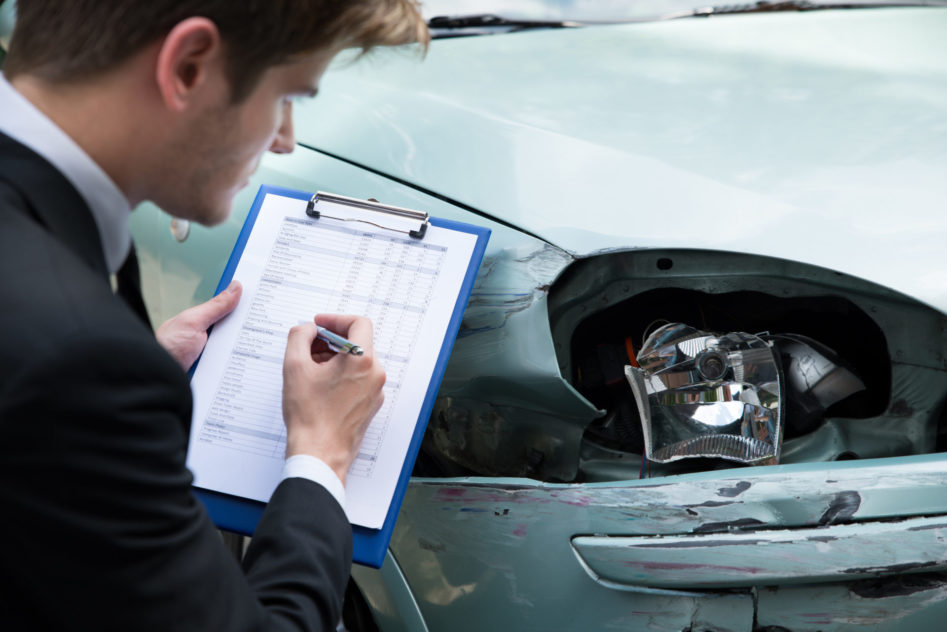When it comes to property damages, many accident victims feel the most mistreated by their own insurance company.
This is because they feel that since they are paying for insurance to the company, that company owes them something. However, it is here that insurance carriers are typically the most “reasonable” in the claims process.
I want to qualify this by making clear that few insurance companies or adjusters are ever reasonable, and they are always looking to get out of paying or at least dumbing down how much they have to pay.
When it comes to property damage claims, you will hear that insurance carriers are only willing to pay part of the value of a vehicle. While this is sometimes true, the reality is that the way the law defines “fair market value” does not necessarily represent what an individual paid for his vehicle. It is what that individual could sell the vehicle for on a street corner.
Unfortunately, many car buyers finance a vehicle and don’t understand the insurance process well enough to ensure that their rights are protected. People are not to blame for this since it is painfully complicated and insurance agents are not forthcoming in explaining the process.
When you are financing a vehicle, you need to purchase the right coverages to protect yourself from others and their negligence.
When you go to purchase a vehicle, you need to make sure that you purchase the right insurance to protect your purchase. This is not enough. You also need to make sure you insure yourself to cover the amount of the loan in the event that the vehicle is damaged or destroyed in a car accident.
There are a few types of car insurance that you will need to protect yourself from ending up upside down on a car purchase when it becomes a total loss in a car crash.
1. COMPREHENSIVE COVERAGE
Comprehensive insurance coverage is coverage that mandates that your insurance company must pay you the fair market value of your vehicle if it is stolen or damaged by fire.
It also covers property damage where the damage results in a total loss and when a vehicle is damaged by vandalism or a collision with an animal.
2. COLLISION COVERAGE
This type of insurance is also important. It protects you from yourself. Like the name says, collision coverage is for damages arising from a collision.
However, this type of insurance does not look at who is at fault for the crash. It pays without regard to who is at fault.
With collision coverage, the insurance company must pay the cost of repairs to your vehicle. If the repairs are too extensive to be financially feasible, the insurance company will pay the fair market value of the vehicle.
There is usually a deductible: $250, $500, $750 or $1000. The deductible is the amount that the insurance will not cover from a collision.
3. GAP INSURANCE
GAP insurance is the least common type of insurance coverage carried by motorists. It is often offered to buyers of vehicles at the time of purchase when they are financing the vehicle.
This type of insurance covers a vehicle owner when it is involved in a total loss crash and the amount of the loan exceeds the fair market value of the vehicle. It is often difficult for car owners to understand that the purchase price and the fair market value of a vehicle are almost never the same. GAP insurance pays the difference between these two amounts.
Vehicle Replacement Insurance. This type of insurance is very uncommon and not offered by most carriers. If you carry this type of insurance, the insurance company will pay to replace your car minus the deductible.
Uninsured Motorist Property Damage. Uninsured motorist property damage coverage is used when an accident victim is hit by someone without insurance or with insufficient insurance. It covers damages that result from drivers who do not carry any insurance.
4. UNDER-INSURED MOTORIST PROPERTY DAMAGE
This is a subset of uninsured motorist property damage coverage. If you have uninsured motorist coverage for property damage claims then you also have this type of coverage.
This insurance kicks in when someone damages your car but does not have sufficient coverage to pay all of your property damage.
This happens frequently where there are multiple vehicles involved in a crash and the person only has the state minimum of $10,000 coverage. Your underinsured motorist coverage will then come into play and pay the rest of the damages up to the policy limits.
It is important to keep in mind that you only have the insurance you pay for. You will hear the term “Full-Coverage” but this does not mean you have every type of coverage available.
Full-Coverage normally refers to liability coverage for bodily injury and property damage. It also covers collision and comprehensive claims. However, it does not normally include uninsured motorist, underinsured motorist, rental, medical payment, or roadside assistance coverage.
The bottom line is that it is important to make sure you have the type of coverage you need to protect yourself from car accidents.
Be aware that there is insurance for when you are at fault and when others cause you harm. When purchasing insurance, think about what would happen to you financially if you are in a crash and it is your fault and then think about what would happen if someone else is at fault and has no insurance or insufficient insurance. Let this be your guide when you purchase insurance.
If you were injured due to someone else’s negligence, call Whitener Law Firm to find out what we can do to get you the money you deserve. For a free consultation regarding a personal injury claim, contact us at 505-883-7877.
There is NO FEE unless we win your case.

